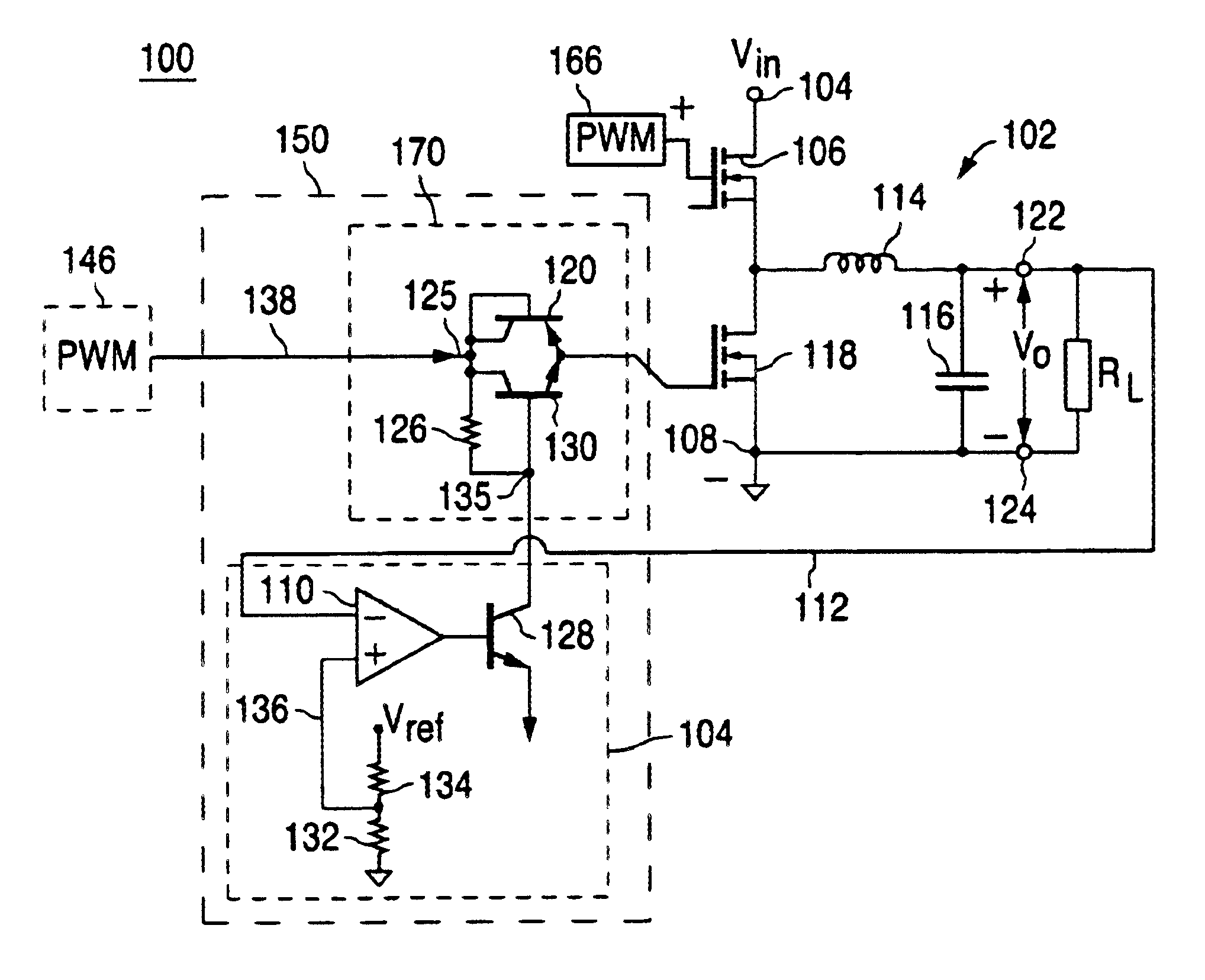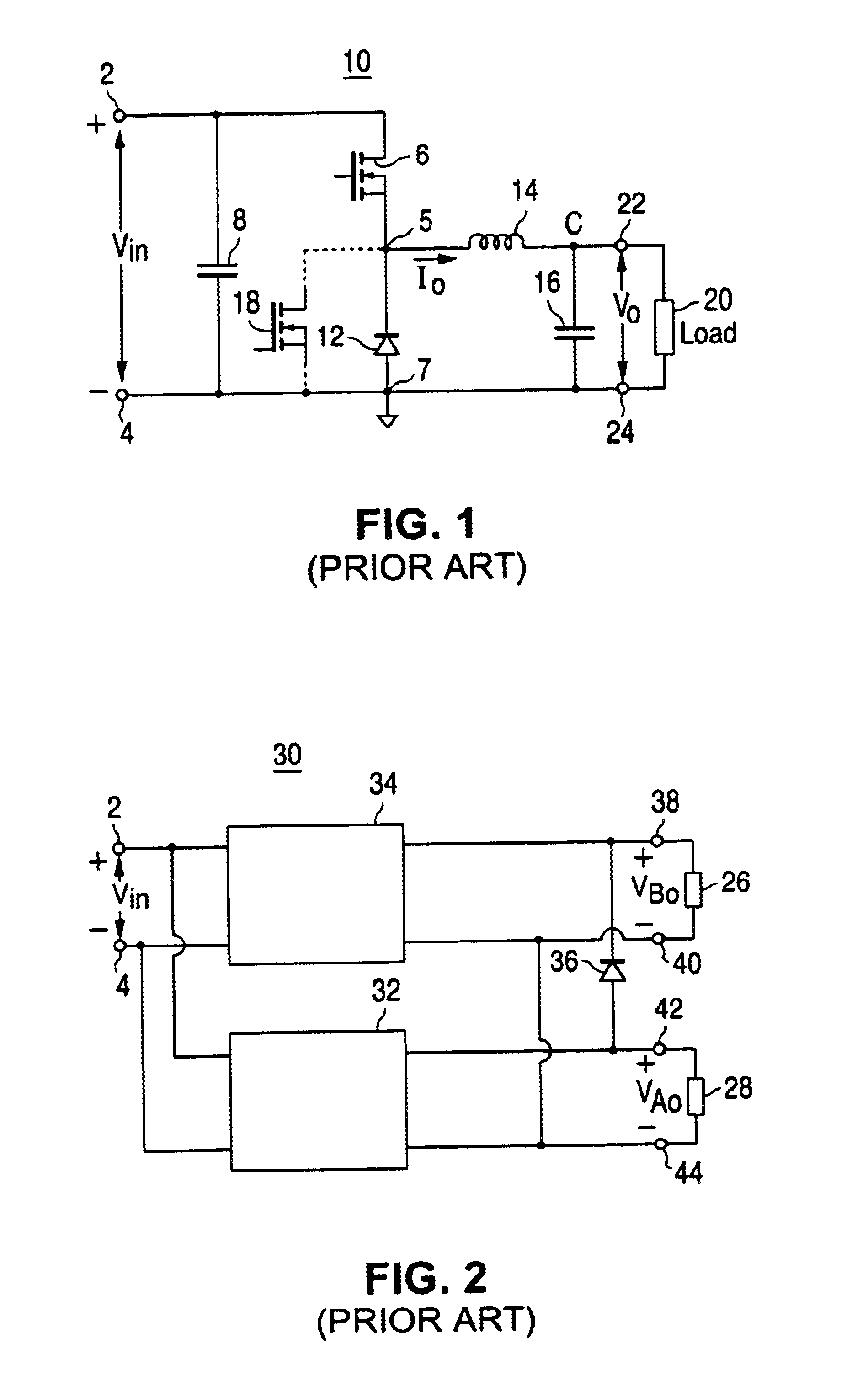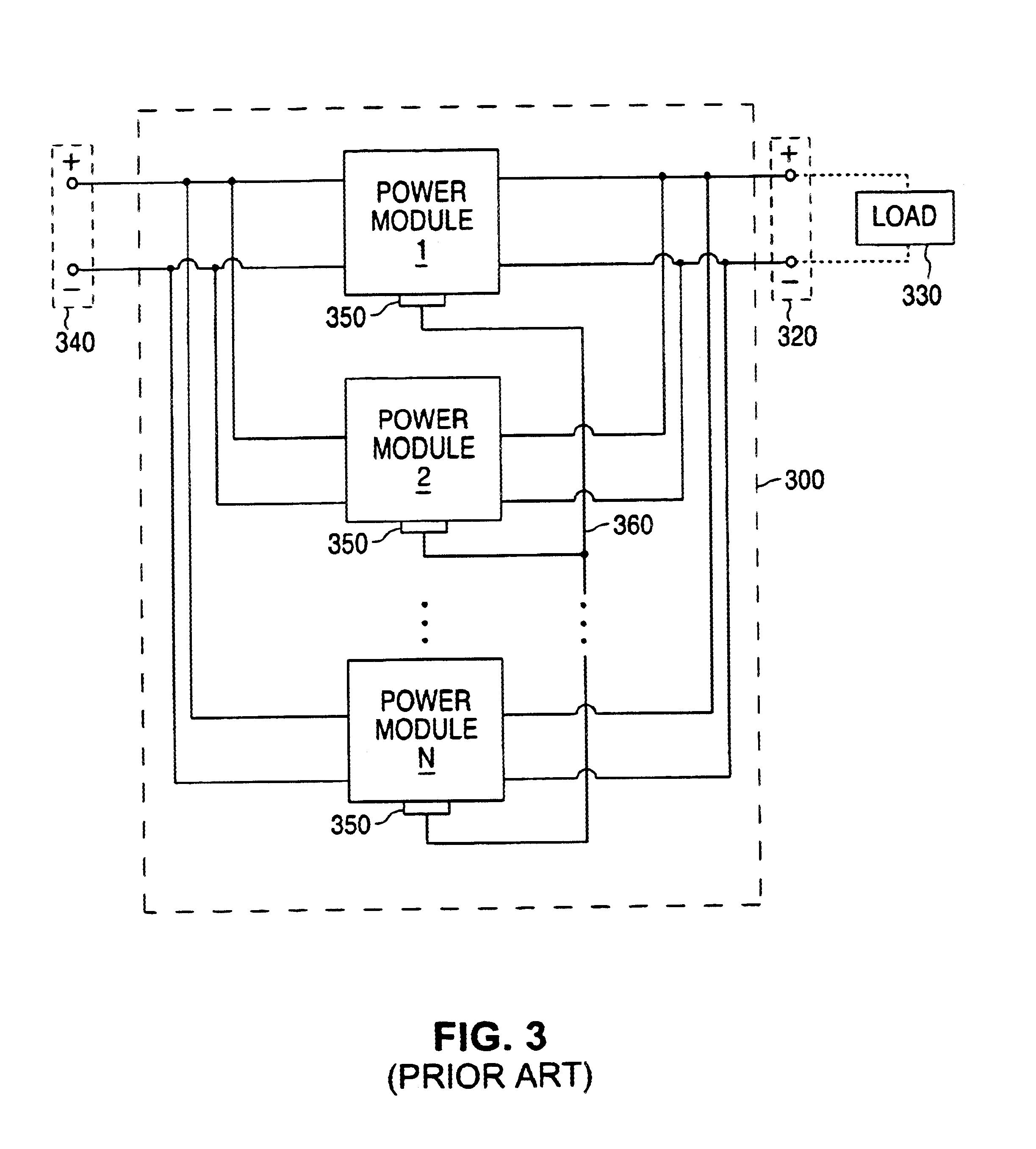Soft-start with back bias conditions for PWM buck converter with synchronous rectifier
a synchronous rectifier and back bias technology, applied in the direction of electric variable regulation, process and machine control, instruments, etc., can solve problems such as system failure, and achieve the effect of preventing current reversal (sinking) and efficient preventing the turning
- Summary
- Abstract
- Description
- Claims
- Application Information
AI Technical Summary
Benefits of technology
Problems solved by technology
Method used
Image
Examples
Embodiment Construction
The present invention overcomes the drawbacks of known prior art circuits. A preferred embodiment of the circuit for each converter in a paralleled system of converters is shown in FIG. 5. The converter 200 has an input terminal 104 to which an input DC voltage Vin is coupled relative to ground and an output terminal 122 where the output DC voltage VO of each converter module is provided relative to ground. Converter 200 includes a control circuit 250 coupled to a buck regulator 102 having a synchronous rectifier 118. The buck regulator 102 comprises a switch 106, an inductor 114, and a capacitor 116, connected in a conventional way between input terminal 104 and output terminal 122. An exemplary load RL is shown coupled to the output of converter 200. Switch 106 is typically a power MOSFET which is controlled in a known manner by a PWM 166 that is responsive to the output voltage Vo. When the switch 106 is closed, the capacitor 116 is charged via switch 106 and inductor 114 from th...
PUM
 Login to View More
Login to View More Abstract
Description
Claims
Application Information
 Login to View More
Login to View More - R&D
- Intellectual Property
- Life Sciences
- Materials
- Tech Scout
- Unparalleled Data Quality
- Higher Quality Content
- 60% Fewer Hallucinations
Browse by: Latest US Patents, China's latest patents, Technical Efficacy Thesaurus, Application Domain, Technology Topic, Popular Technical Reports.
© 2025 PatSnap. All rights reserved.Legal|Privacy policy|Modern Slavery Act Transparency Statement|Sitemap|About US| Contact US: help@patsnap.com



